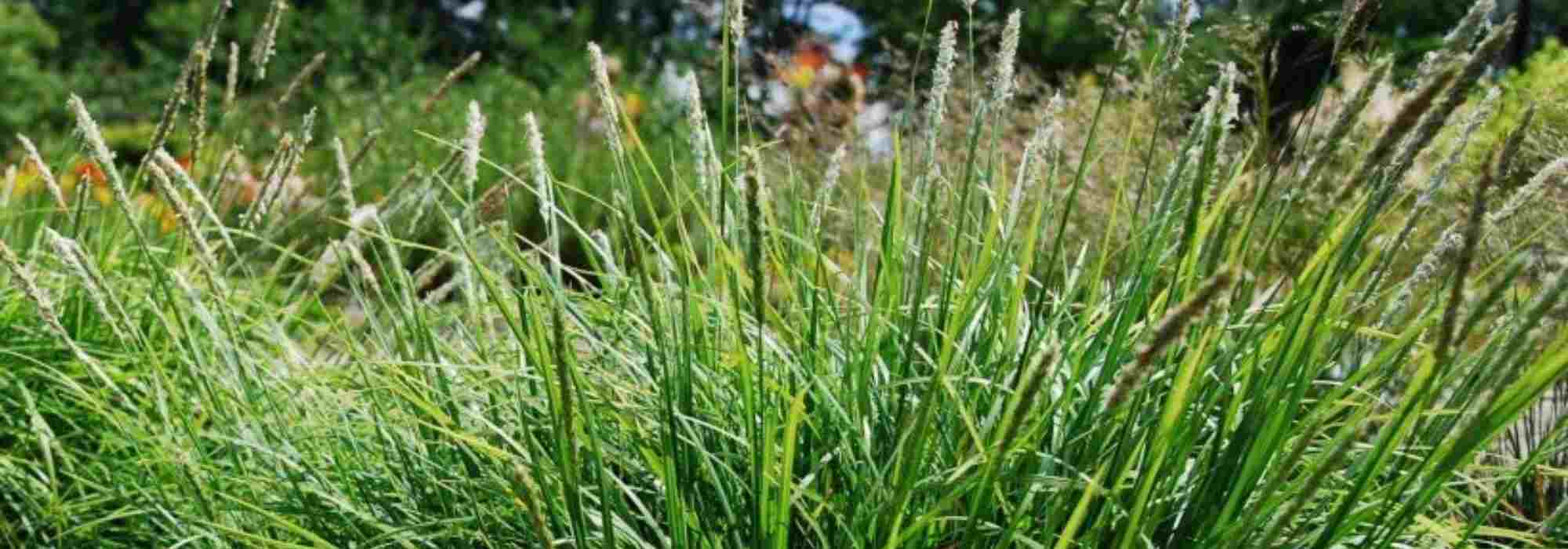
Sesleria: 7 Ideas for Pairing It
In the garden or in a pot
Contents
The Sesleria is an interesting low grass known for its colourful foliage and spring or summer flowering with slender spikes, similar to the Sesleria automnalis or Autumn Sesleria. Elegant in all seasons, it forms a small, dense, evergreen tuft that reaches heights of 30 to 70 cm, depending on the species. Hardy, non-invasive, and neither too large nor too small, it thrives in poor, well-drained soil, in full sun or partial shade. It requires no maintenance as long as it is planted in well-drained ground.
It is ideal for adding lightness and a natural feel to both small and large sunny spaces, even in dry soil during summer.
It is easy to combine in groups within a naturalistic meadow or along a pathway, in modern gardens, rockeries, borders, and even in pots.
Discover how to create beautiful combinations with your Seslerias!
→ Learn more about Sesleria in our comprehensive guide: Sesleria: planting, growing, and care
In rockery
In particularly well-drained soil, Sesleria can be surrounded by other low plants that, like it, tolerate summer drought well. Standing at 40 cm, Sesleria caerulea adapts very well to poor, rocky, calcareous, and dry soils in summer. It develops small, very dense, and slightly bristly blue tufts that can be paired with creeping or low plants. It forms stunning duos with the blue foliage of Euphorbia myrsinites, a creeping spurge. Surround it all with Lavenders, the Eryngium planum ‘Blue Hobbit’, Carex comans ‘Frosted Curls’ with its stout mane of blue-green, and Festuca ‘Elijah Blue’, another small perennial and evergreen grass that forms beautiful blue cushions with a similarly bristly habit.
You can also mix it with other creeping plants such as lamb’s ears (Stachys lanata or cretica) and Artemisia alba ‘Canescens’. Complete the arrangement with small Sedums.
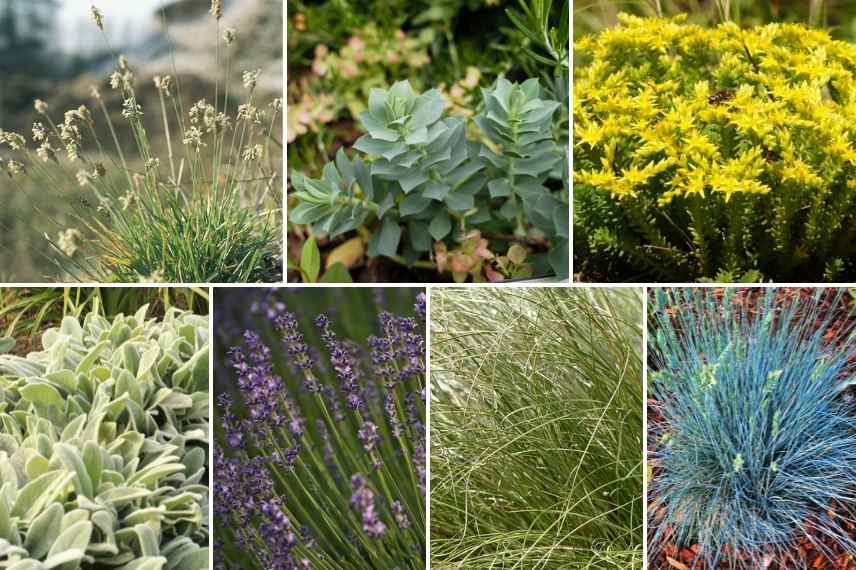
Sesleria caerulea, Euphorbia myrsinites, Sedum sexangulare, Stachys lanata, lavender, Carex comans ‘Frosted Curls’ and Festuca ‘Elijah Blue’
At the edge of the path
With a compact silhouette, Seslerias can make excellent borders for a pathway. They bring a lot of natural charm and rustic appeal, enhancing the area. Additionally, they remain attractive all year round, even in winter, and do not spread, which is important for creating a border. Choose very low varieties (40 cm in height), such as Sesleria heufleriana, which maintains an impeccable appearance in every season. You can alternate it with Pennisetum alopecuroides ‘Hameln’ with white spikes reflecting brown hues, a reliable choice that remains compact and does not spread, and with Stipa pennata, with its silver hair.
Plant them in masses along the pathway, interspersing with summer or autumn-flowering perennials like asters, Penstemons, or white scabious such as Scabiosa caucasica ‘Alba’.

In the centre, Sesleria heufleriana, accompanied by Pennisetums ‘Hameln’, asters, Penstemons fruticosus, and Stipa pennata
Discover other Sesleria
View all →Available in 2 sizes
Available in 1 sizes
Available in 2 sizes
Available in 1 sizes
Available in 2 sizes
Available in 2 sizes
In groundcover
Sesleria is a low grass suited to challenging conditions, and valuable for landscaping in somewhat arid spots, even in partial shade, dry shade, or under trees. Non-invasive, it can be planted in masses to effectively cover the soil. It also tolerates wind and salt spray very well and will add volume to dry lawns. You might pair Sesleria caerulea or Sesleria argentea with other small grasses like the Stipa tenuissima, with its incredible fresh green hair that sways with the slightest breeze. Also consider Achillea crithmifolia, which makes a grey-green evergreen groundcover suitable for fairly large areas, and Sedum spathulifolium ‘Cape Blanco‘, a creeping stonecrop forming rosettes of silver-grey to bronze topped with sulphur-yellow flowers.
Accent the scene with light, flowering perennials, such as field daisies, Asters (Aster cordifolius ‘Ideal’), scabious, cistus, lavender, and rosemary, as well as annual poppies and Nigella damascena.
In shaded areas, they can accompany small periwinkles, pulmonarias, epimediums, and dry shade perennials like carex.
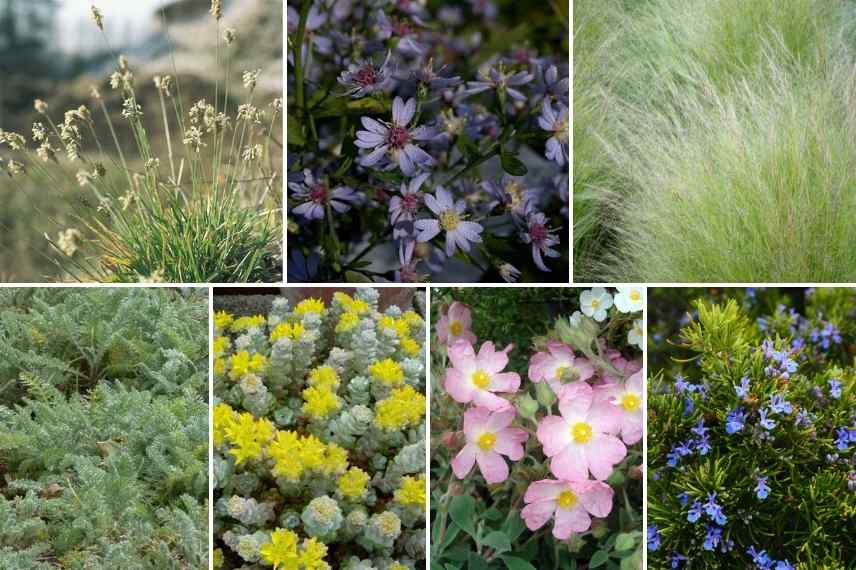 Stipa argentea, Aster cordifolius ‘Ideal’, Stipa tenuissima, Achillea crithmifolia, Sedum spathulifolium ‘Cape Blanco‘, Cistus argenteus, and creeping rosemary
Stipa argentea, Aster cordifolius ‘Ideal’, Stipa tenuissima, Achillea crithmifolia, Sedum spathulifolium ‘Cape Blanco‘, Cistus argenteus, and creeping rosemary
Read also
Grasses: which variety to choose?In a naturalistic border
For this very natural composition, favour species with a soft habit and changing colours, such as the beautiful Sesleria automnalis, notable for its bright light green foliage that takes on a blonde hue over the months, or Sesleria argentea with its chartreuse leaves in full sun. Combine with other tall grasses like Stipa gigantea, the flexible Deschampsia flexuosa, or Miscanthus sinensis ‘Gracillimus for a wild look. They also work wonderfully when paired with other luminous grasses like Melica ciliata, which will respond naturally to them.
The clumps of Sesleria punctuate the heart of a mix of summer-flowering perennials such as Achillea filipendulina ‘Golden Plate’, Asters, Echinaceas, or Oriental Poppies. The Verbena bonariensis will add beautiful verticality to this scene, while some perennial flaxes will provide an elegant bluish touch.
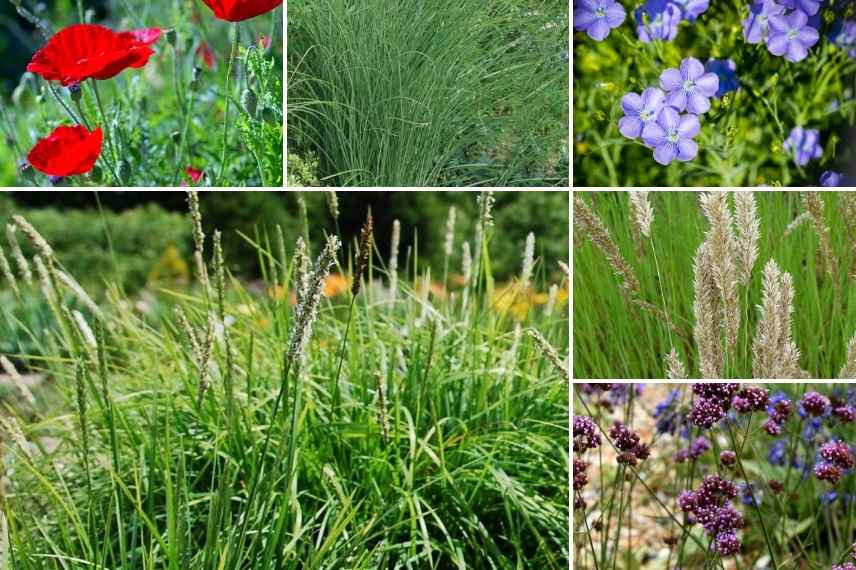
Sesleria automnalis surrounded by Oriental poppies, a Miscanthus ‘Gracillimus’, the blue of perennial flaxes, Melica ciliata, and Verbena bonariensis
In a wild garden
In a wild or country garden, such as in the naturalist meadows, prefer taller species of Sesleria; they create a splendid backdrop even in winter, blending naturally into a lush and wild atmosphere. Opt for the Sesleria nitida, which reaches 70 cm in height and has a more substantial growth without ever being invasive. Complement it with Stipa calamagrostis, another graceful medium-sized grass, Panicum virgatum, or even the poetic fountain grass. Their elongated spikelets will provide a contrast in shape with the flat inflorescences of Achilleas and autumn sedums. In well-drained soil, it easily associates with other lovely wildflowers such as giant wild Asters (Aster laevis, Aster turbinellus), Buenos Aires Verbenas, nepeta, hollyhocks, and other thistles like Teasel to complete a wild scene.
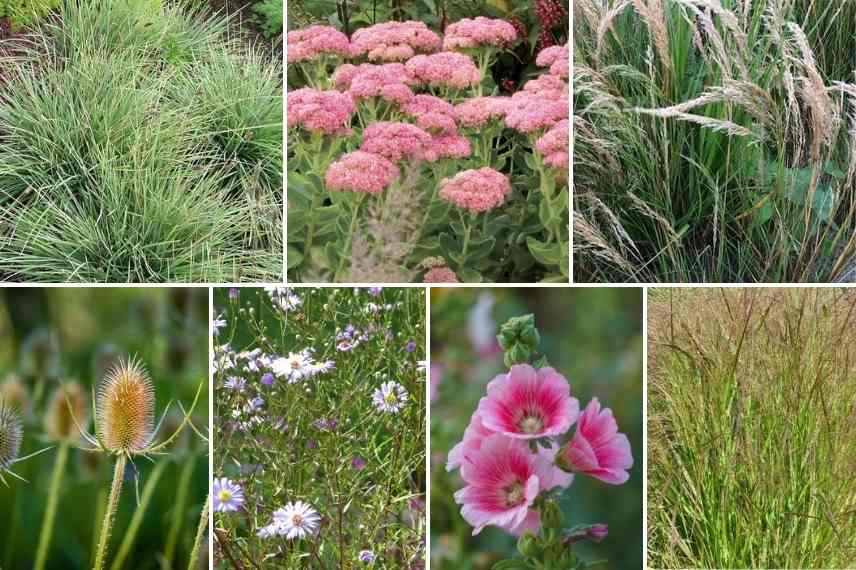
Sesleria nitida (© Carolyn Willitts), Sedum spectabile, Stipa calamagrostis, Teasel, Asters turbinellus, hollyhocks, and Panicum virgatum ‘Squaw’
In a contemporary garden
With its somewhat bristly appearance and graphic flowering, Sesleria adds a modern touch to a contemporary garden and graphic space, or a dry or mineral garden. It can help to structure and punctuate a minimalist decor. In an urban garden with clean lines, it will soften concrete structures. In a minimalist setting, you can plant a few clumps of Seslerias alongside Phormiums like Phormium tenax.
At the base of a Fargesia robusta ‘Pingwu’, a non-running bamboo variety with a striking appearance, it makes a beautiful graphic groundcover. It will also create a lovely contrasting duo in terms of colours and shapes with Agapanthes.
The dark foliage will highlight its colourful hair that catches the light in summer and turns blonde over the seasons. The Panicum virgatum ‘Blue Darkness’, another robust grass with variegated purple-black and blue-green foliage, will be highly appreciated at the heart of this contemporary display. Pair them with contrasting ball shapes, for example by choosing Pittosporum tenuifolium ‘Tom Thumb’.

Sesleria caerulea, Pittosporum ‘Tom Thumb’, Phormium tenax, Agapanthes and Panicum virgatum ‘Blue Darkness’
In pot
Sesleria adapts very well to pot cultivation, provided it is given a sufficiently well-drained substrate. With its reduced yet elegant and light silhouette, it helps to lighten certain floral displays. One should choose the lowest species that hold their place well throughout the year, such as Sesleria caerulea. It will accompany the flowering of annuals in summer, such as cosmos, nigella, diascias, or small dahlias.
To enrich a composition of grasses, you can pair it with a Pennisetum alopecuroides ‘Goldstrich’, another compact, original, and hardy grass or a Festuca glauca that will echo its fine blue foliage.
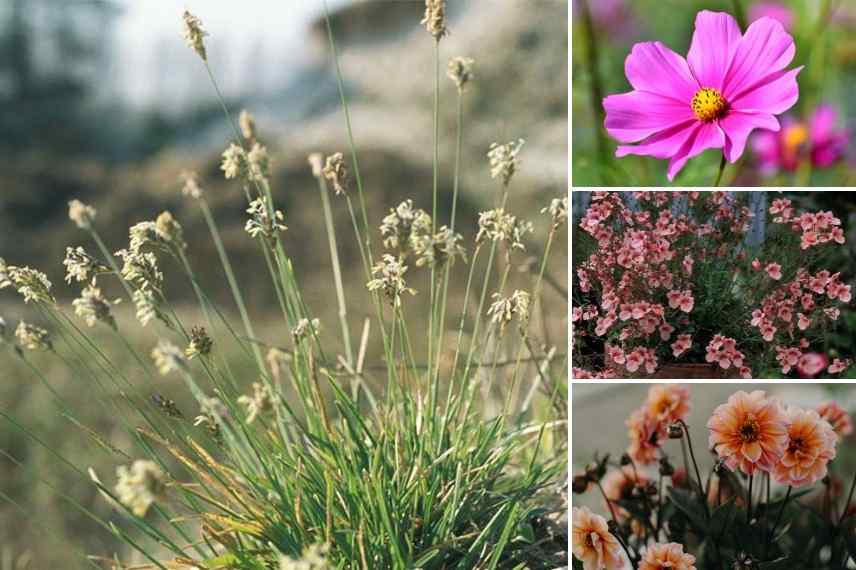
Sesleria caerulea, Cosmos, Diascias and Dahlias
- Subscribe!
- Contents
![[sesleria-associer] Je suis désolé, mais il semble que vous n'ayez pas fourni de texte à traduire. Pourriez-vous fournir plus de détails ou le texte que vous souhaitez que je traduise ? Merci.](https://www.promessedefleurs.ie/blogwp/wp-content/uploads/2022/02/sesleria-associer.jpg)































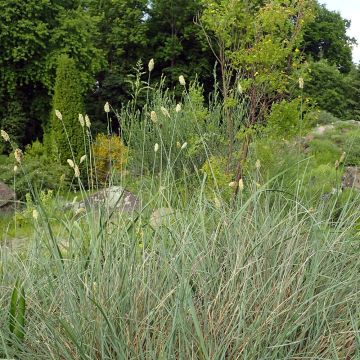

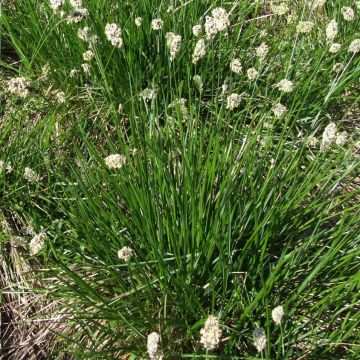
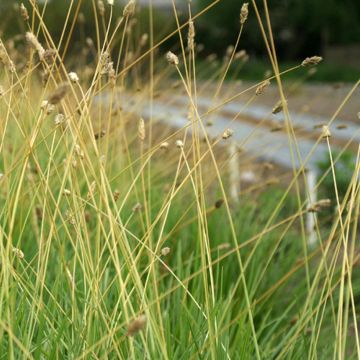
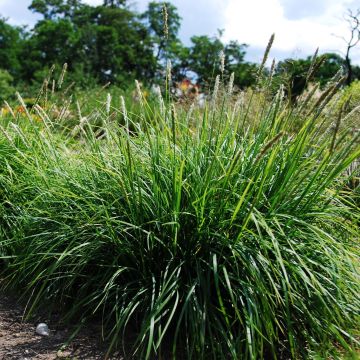
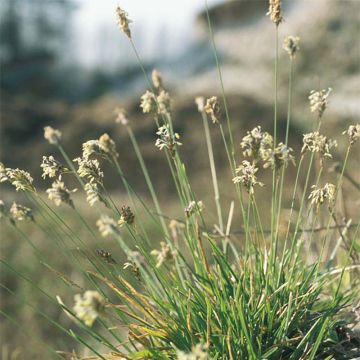
Comments